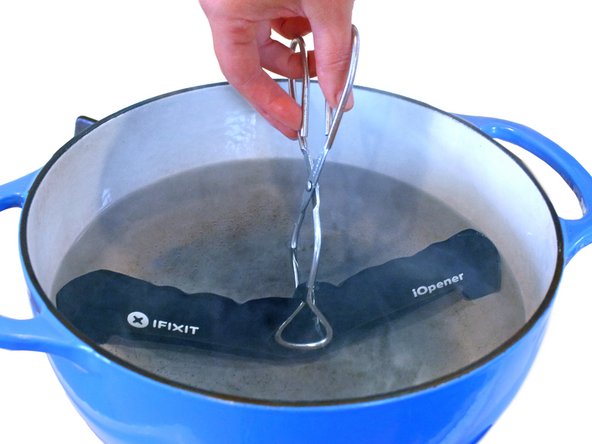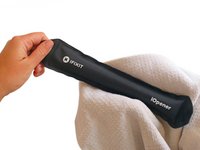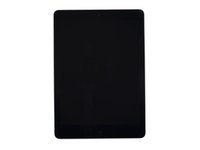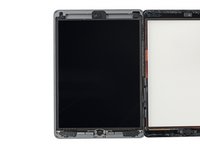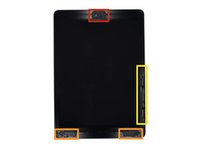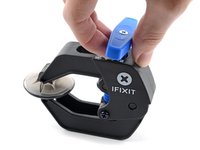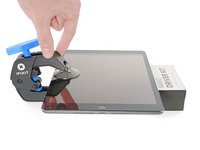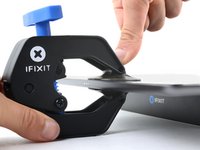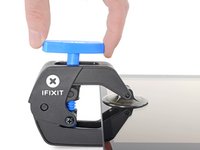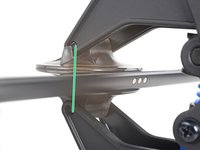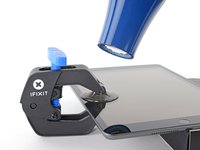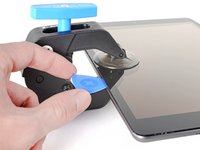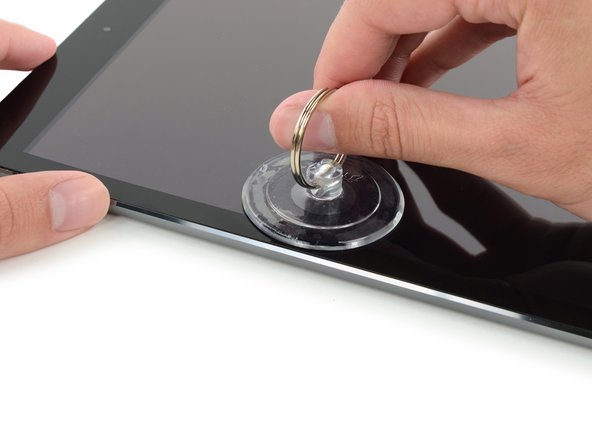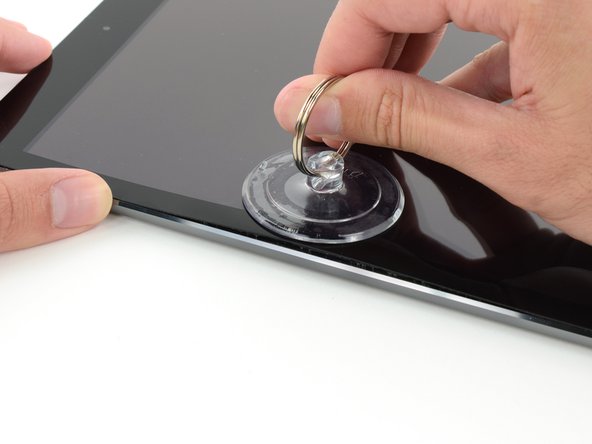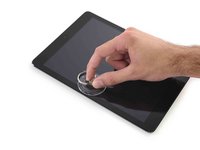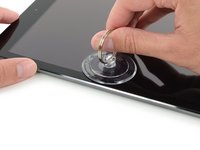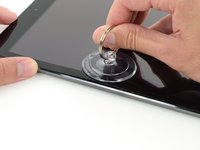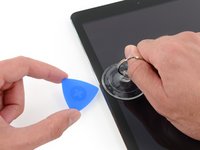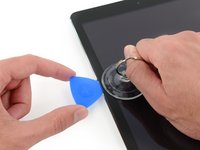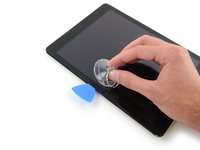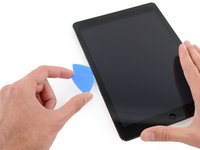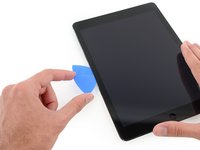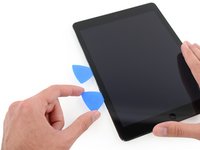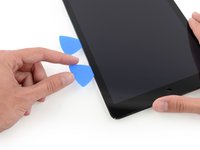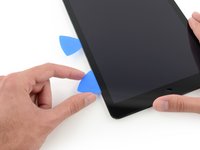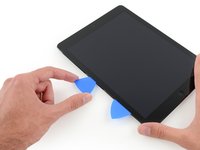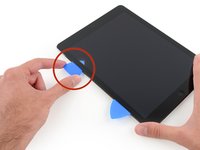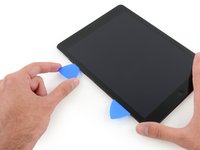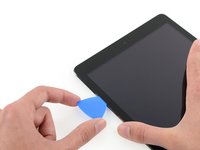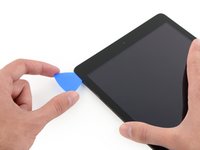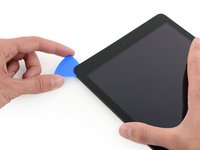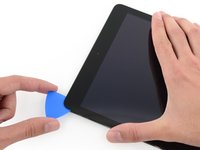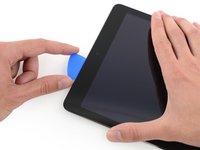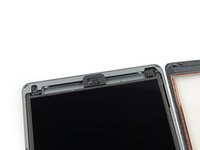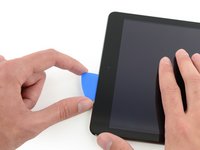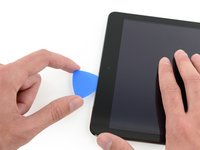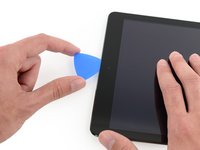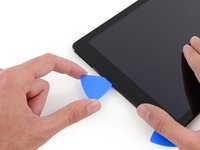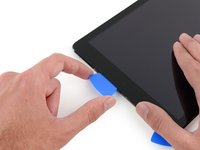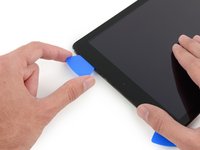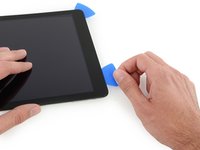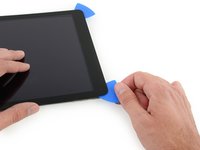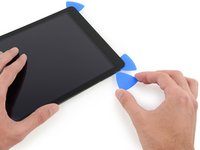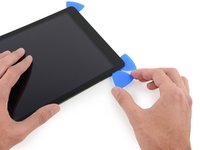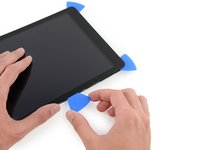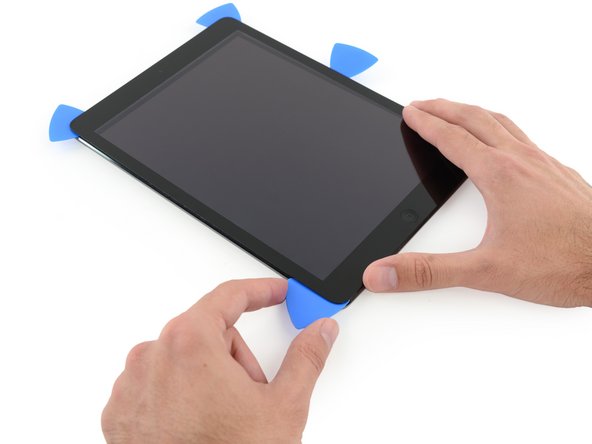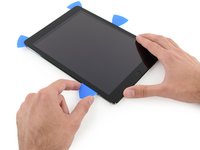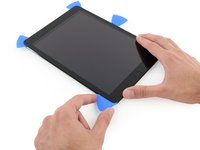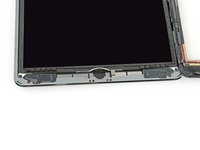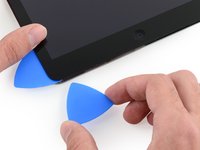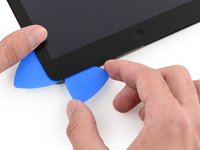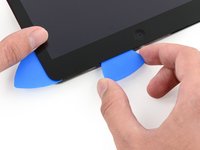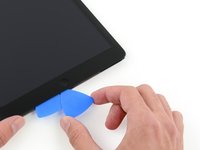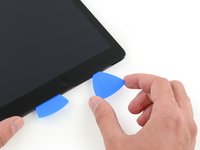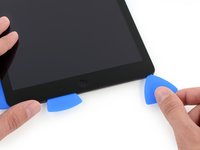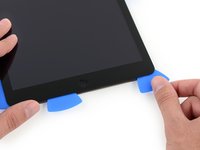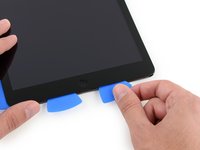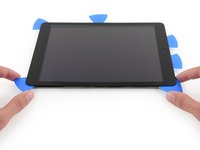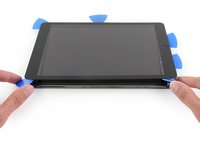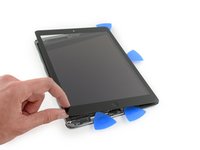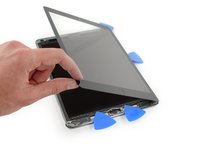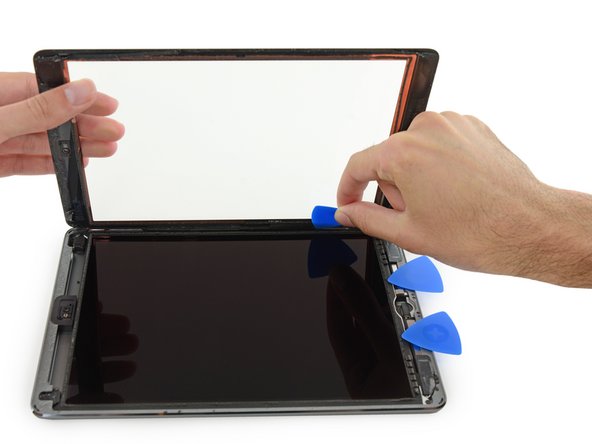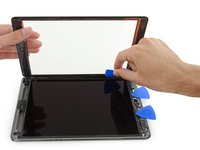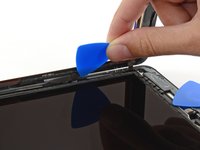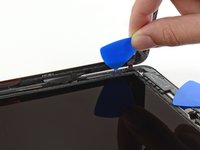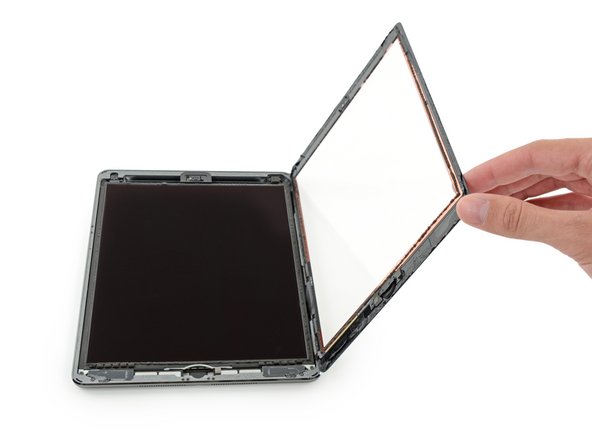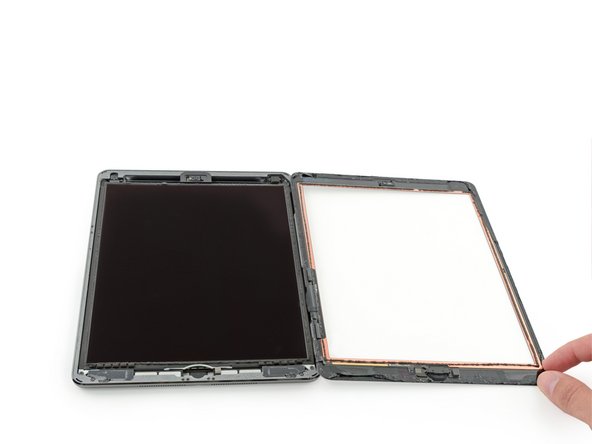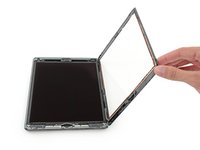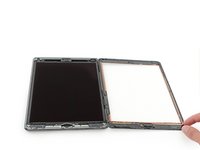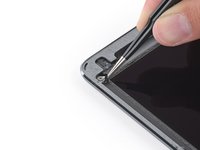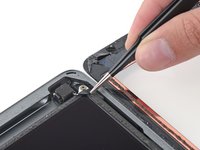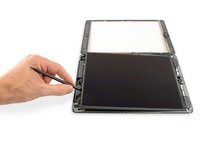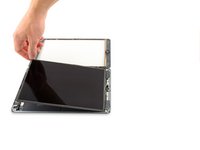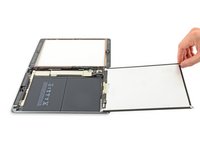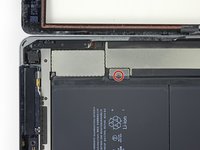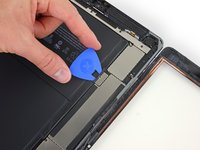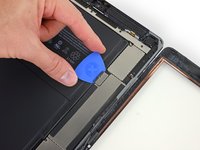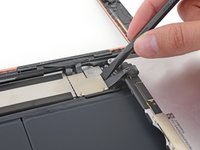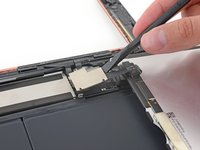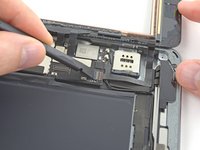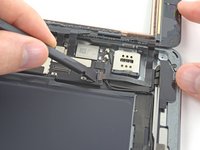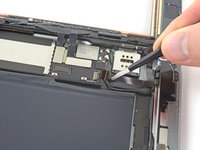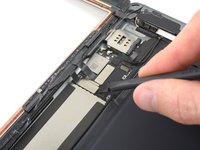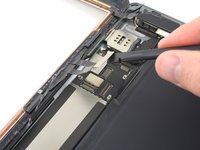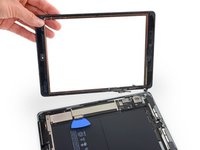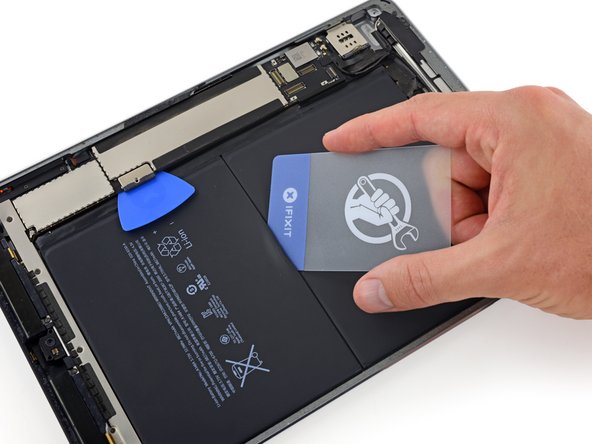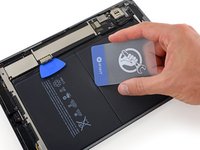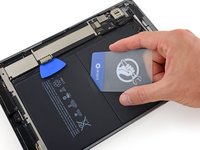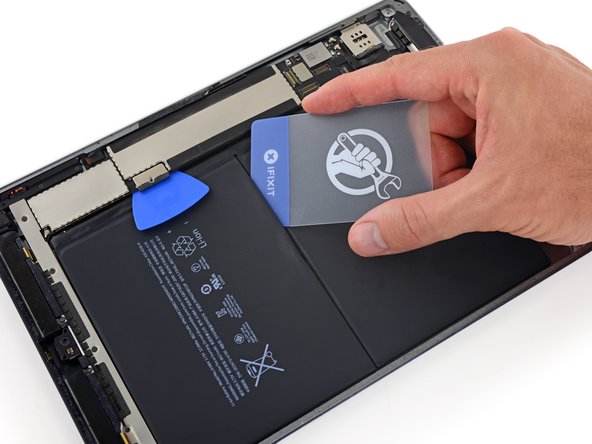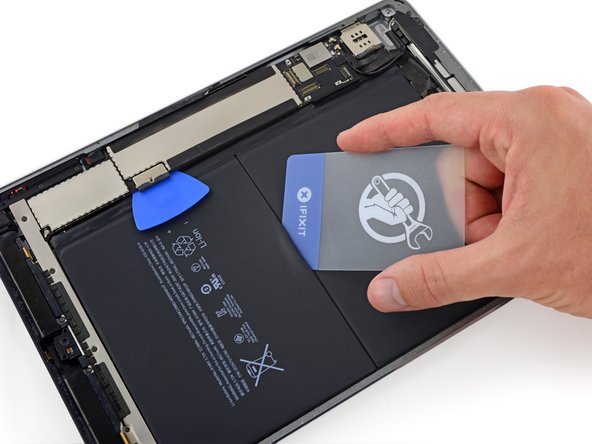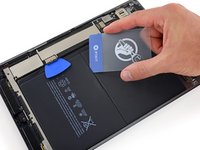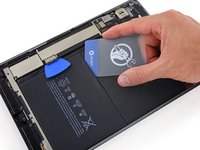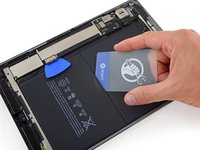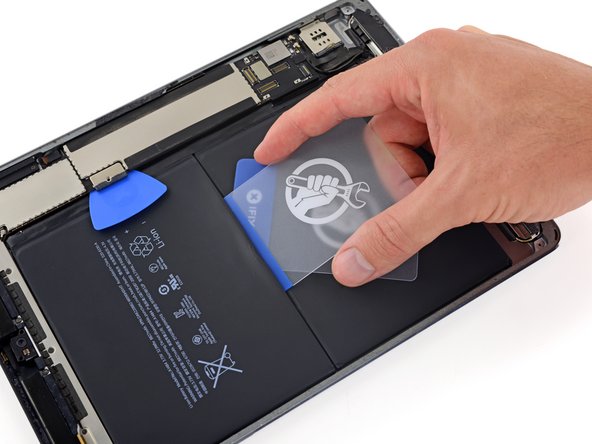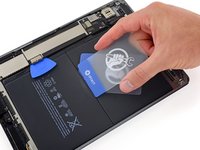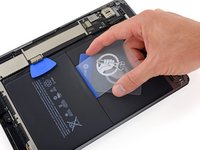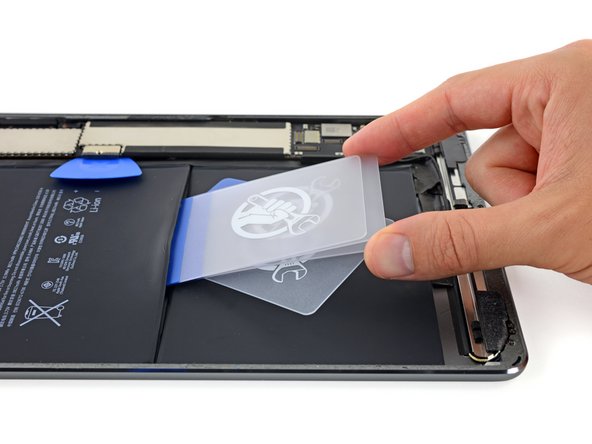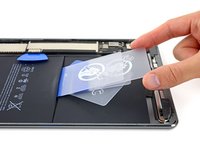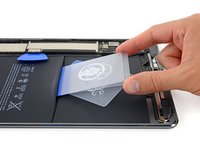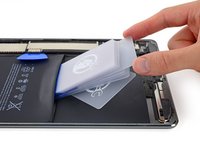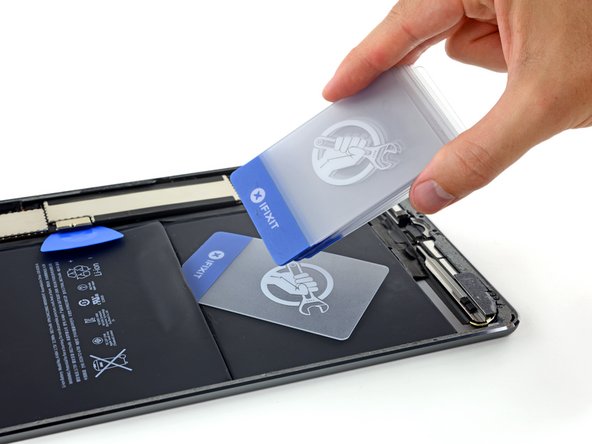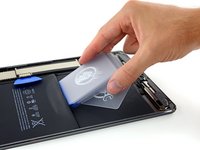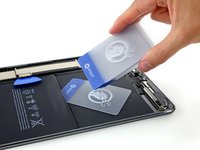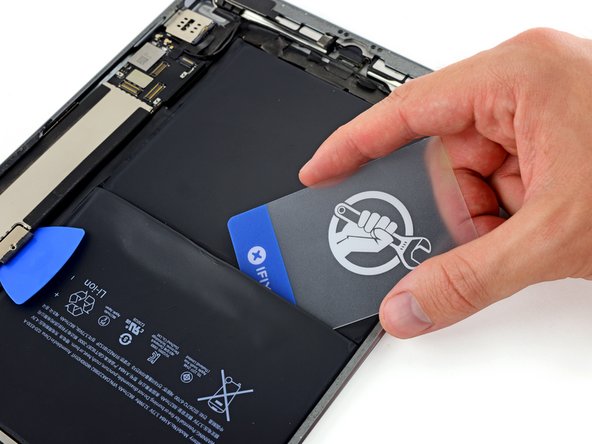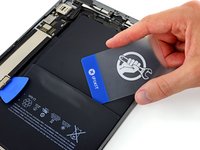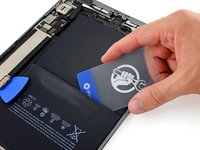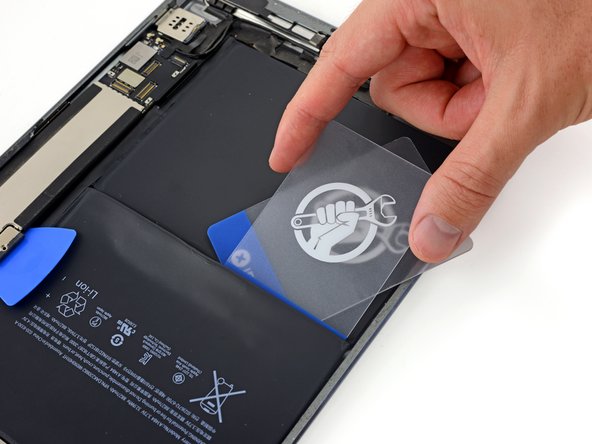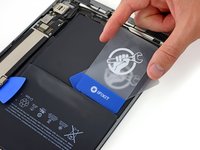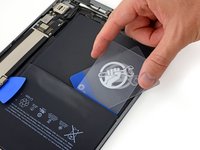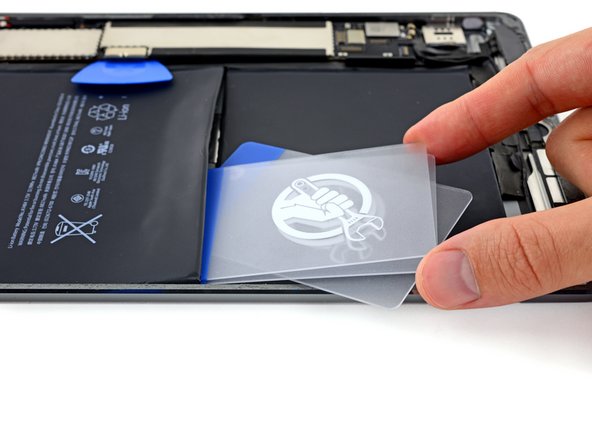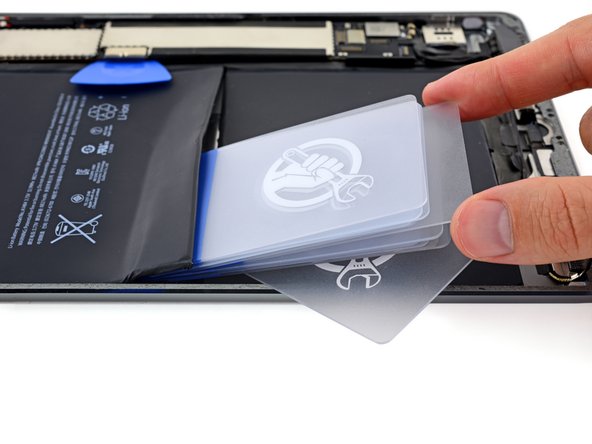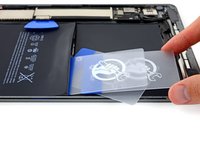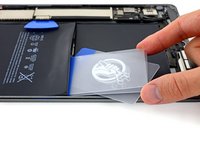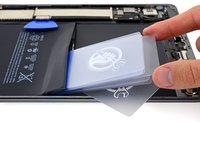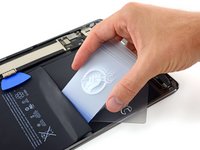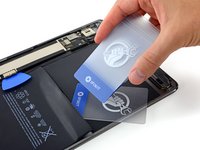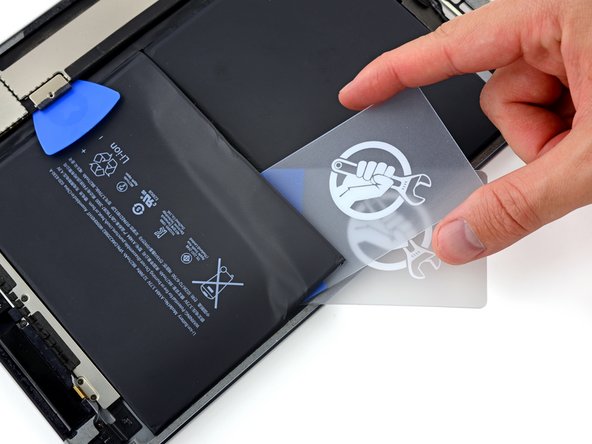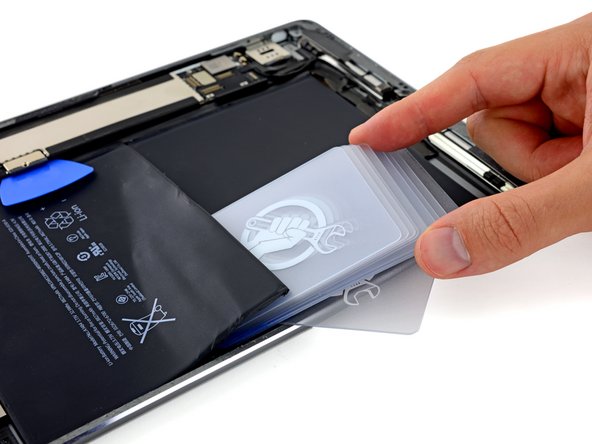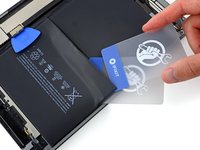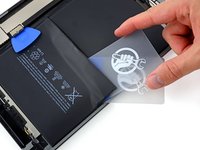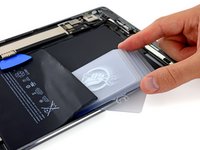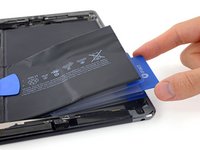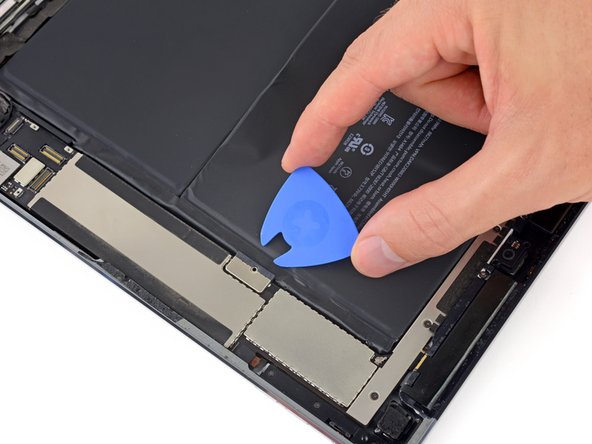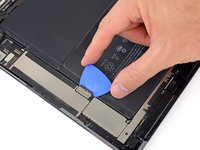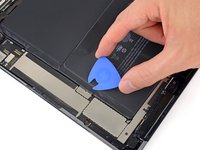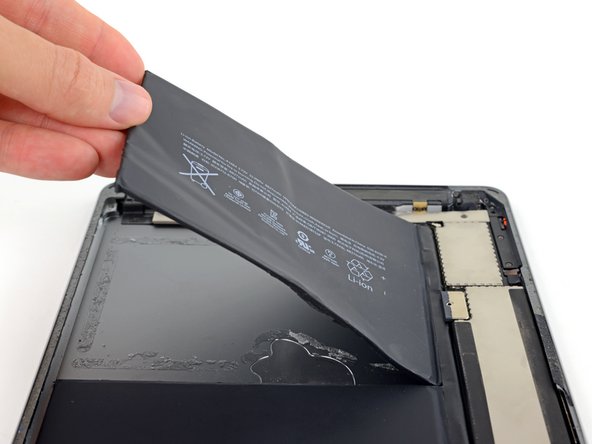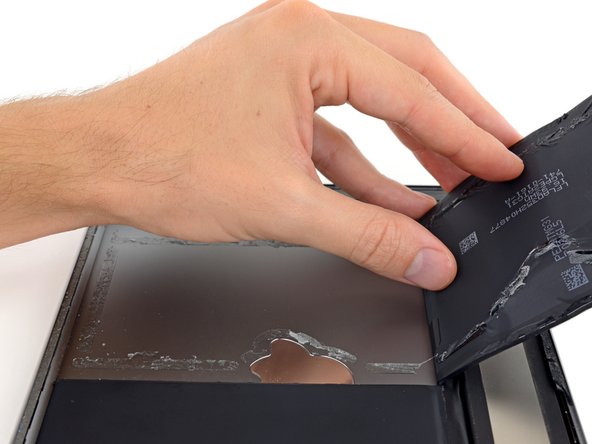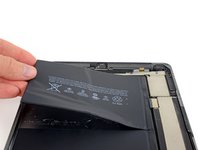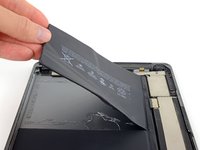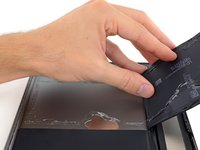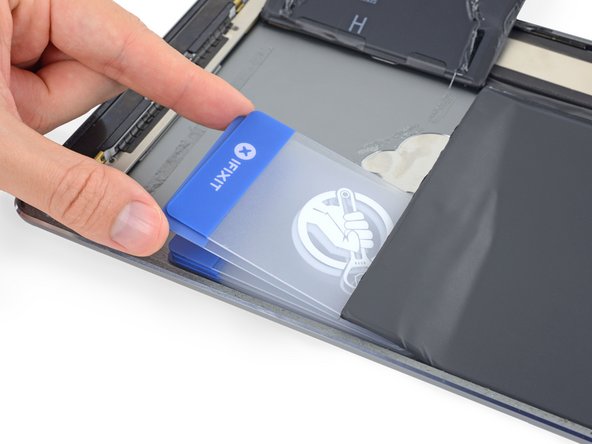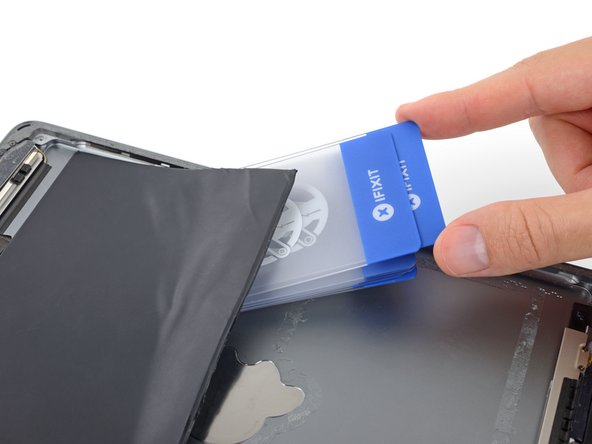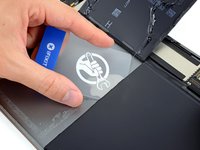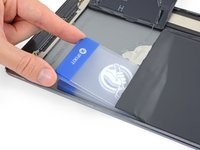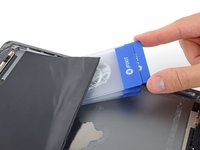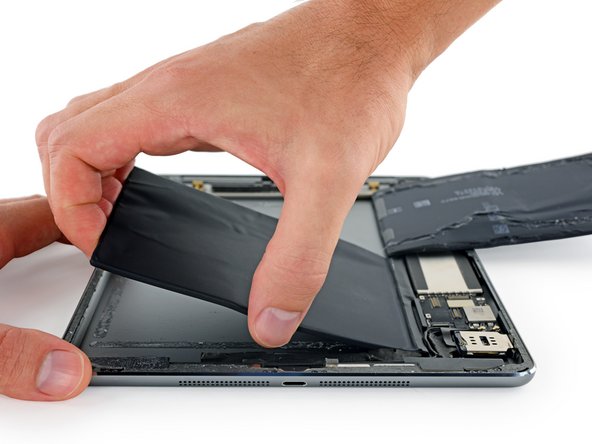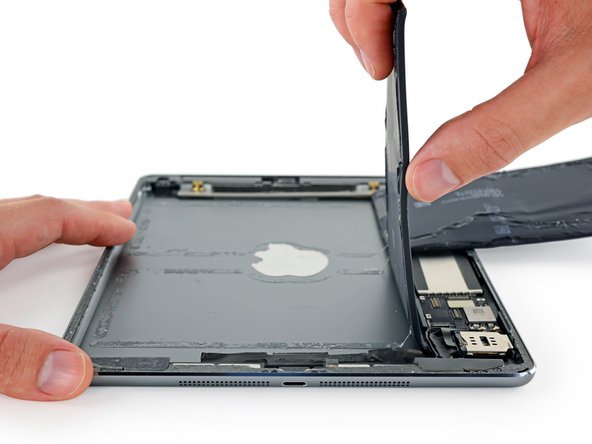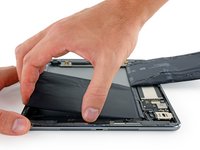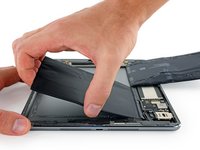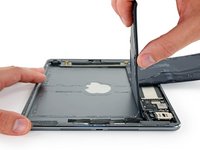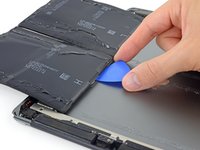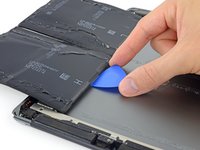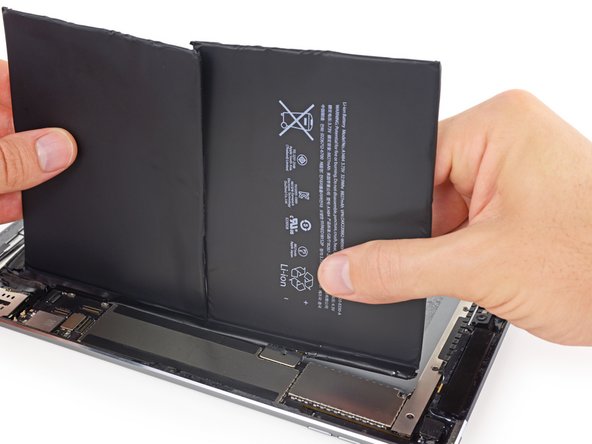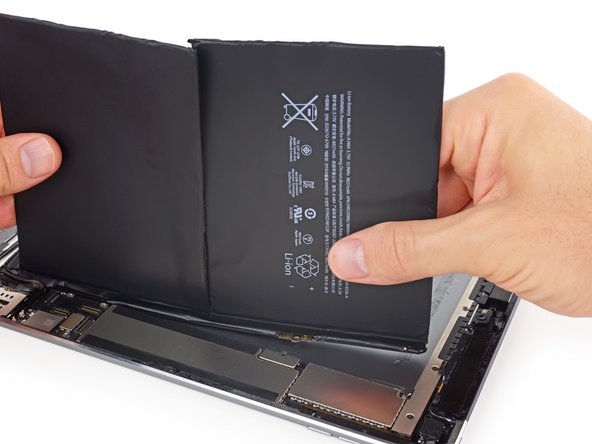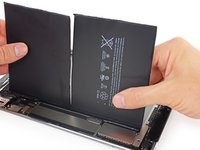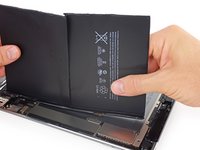Введение
Use this guide to replace an old or failed battery that no longer holds a charge, and bring the life back to your iPad Air LTE.
If your battery is swollen, take appropriate precautions.
Before you begin, drain your iPad's battery below 25% charge. This will minimize the risk of a dangerous thermal runaway in the event that you accidentally puncture or deform the battery.
Lithium-ion batteries contain dangerous chemicals and may catch fire and explode if punctured or mishandled. Use caution.
Parts of this guide were shot with a Wi-Fi model and as such the internals may look slightly different from the LTE model. The procedure is the same for both models except where noted.
Выберете то, что вам нужно
-
-
Heat the iOpener for thirty seconds.
-
Throughout the repair procedure, as the iOpener cools, reheat it in the microwave for an additional thirty seconds at a time.
-
-
-
Remove the iOpener from the microwave, holding it by one of the two flat ends to avoid the hot center.
-
-
-
Fill a pot or pan with enough water to fully submerge an iOpener.
-
Heat the water to a boil. Turn off the heat.
-
Place an iOpener into the hot water for 2-3 minutes. Make sure the iOpener is fully submerged in the water.
-
Use tongs to extract the heated iOpener from the hot water.
-
Thoroughly dry the iOpener with a towel.
-
Your iOpener is ready for use! If you need to reheat the iOpener, heat the water to a boil, turn off the heat, and place the iOpener in the water for 2-3 minutes.
-
-
-
If your display glass is cracked, keep further breakage contained and prevent bodily harm during your repair by taping the glass.
-
Lay overlapping strips of clear packing tape over the iPad's display until the whole face is covered.
-
Do your best to follow the rest of the guide as described. However, once the glass is broken, it will likely continue to crack as you work, and you may need to use a metal prying tool to scoop the glass out.
-
-
-
Handling it by the tag, place the heated iOpener on the side of the iPad to the left of the home button assembly.
-
Let the iOpener sit for at least a minute to soften the adhesive beneath the glass.
-
-
-
As you follow the directions, take special care to avoid prying in the following areas:
-
Front-facing camera
-
Antennas
-
Display cables
-
-
Инструмент, используемый на этом этапе:Clampy - Anti-Clamp$24.95
-
Pull the blue handle backwards to unlock the Anti-Clamp's arms.
-
Place an object under your iPad so it rests level between the suction cups.
-
Position the suction cups near the middle of the left edge—one on the top, and one on the bottom.
-
Hold the bottom of the Anti-Clamp steady and firmly press down on the top cup to apply suction.
-
-
-
Pull the blue handle forward to lock the arms.
-
Turn the handle clockwise 360 degrees or until the cups start to stretch.
-
Make sure the suction cups remain aligned with each other. If they begin to slip out of alignment, loosen the suction cups slightly and realign the arms.
-
-
-
Wait one minute to give the adhesive a chance to release and present an opening gap.
-
If your screen isn't getting hot enough, you can use a hair dryer to heat along the left edge of the iPad.
-
Insert an opening pick under the screen when the Anti-Clamp creates a large enough gap.
-
Skip the next two steps.
-
-
-
Carefully place a suction cup halfway up the heated side.
-
Be sure the cup is completely flat on the screen to get a tight seal.
-
While holding the iPad down with one hand, pull up on the suction cup to slightly separate the front panel glass from from the rear case.
-
-
-
Place an opening pick in the gap opened by the suction cup.
-
Pull the suction cup's plastic nub to release the vacuum seal and remove the suction cup from the display assembly.
-
-
-
Place a second opening pick alongside the first and slide the pick down along the edge of the iPad, releasing the adhesive as you go.
-
-
-
Continue moving the opening pick down the side of the display to release the adhesive.
-
If the opening pick gets stuck in the adhesive, "roll" the pick along the side of the iPad, continuing to release the adhesive.
-
-
-
Take the first pick you inserted and slide it up toward the top corner of the iPad.
-
If you can see the tip of the opening pick through the front glass, don't panic—just pull the pick out just a little bit. Most likely, everything will be fine, but try to avoid this as it may deposit adhesive on the front of the LCD that is difficult to clean off.
-
-
-
Reheat the iOpener and place it on the top edge of the iPad, over the front-facing camera.
-
-
-
Slide the opening pick around the top left corner of the iPad to separate the adhesive.
-
-
-
Slide the opening pick along the top edge of the iPad, stopping just before you reach the camera.
-
-
-
Pull the pick out slightly, and slide the very tip gently along the top of the front-facing camera section of the top edge.
-
-
-
Leave the opening pick in the iPad slightly past the front-facing camera.
-
Take a second pick and insert it to the left of the camera, and then slide it to the corner of the iPad to finish cutting the adhesive on that edge.
-
-
-
Insert the previous pick deeper into the iPad and slide it away from the camera toward the corner.
-
-
-
-
Leave the three picks in the corners of the iPad to prevent re-adhering of the front panel adhesive.
-
Reheat the iOpener and place it on the remaining side of the iPad—along the volume and lock buttons.
-
-
-
Slide the opening pick around the top right corner of the iPad, releasing the adhesive there.
-
-
-
Insert a new opening pick and slide it to the middle of the right edge of the iPad, releasing the adhesive as you go.
-
-
-
Leave the opening picks in place, and set the reheated iOpener on the home button end of the iPad.
-
-
-
Slide the lower left pick to the lower left corner to cut the adhesive on that corner.
-
Leave the pick at the corner. Do not pry any farther, and do not remove the pick from the iPad.
-
The following steps will direct you where to pry to avoid damage to these components. Only apply heat and pry where directed.
-
-
-
With a new pick, slice gently over the left-hand antenna, stopping before the home button.
-
Leave the pick in place before moving on.
-
-
-
Take a new pick and slip it in to the right of the previous pick.
-
Slide across the home button and right-hand antenna using only the very tip to remove the adhesive.
-
-
-
With the adhesive loosened, you can now insert the pick near the right-hand corner. Slide the pick to the left, and stop just short of the Home button.
-
-
-
On the side of the iPad opposite the volume controls, you should have a pick lodged into each corner. Twist the picks to lift the glass slightly, separating the last of the adhesive along the display cable edge.
-
-
-
Lift slowly and gently to further detach the adhesive along the display cable edge.
-
-
-
While supporting the front panel glass, use an opening pick to cut the last of the adhesive.
-
-
-
Once all of the adhesive has been separated, open the glass panel like a page in a book and rest it on your workspace.
-
-
-
Remove the four Phillips screws securing the LCD:
-
Three 4.0 mm screws
-
One 4.8 mm screw
-
-
-
Use the flat end of a spudger to pry the LCD out of its recess just enough to grab it with your fingers.
-
Flip the iPad LCD like a page in a book, lifting near the camera and turning it over the home button end of the rear case.
-
Lay the LCD on its face to allow access to the display cables.
-
-
-
Remove the single 2.3 mm Phillips screw securing the battery connector to the logic board.
-
Leave the blocker there to prevent the battery connector leads from making contact until you have completed your repairs.
-
-
-
Use the flat end of a spudger to gently pry the display cable bracket straight up from the logic board.
-
-
-
Remove any tape covering the home button ribbon cable connector.
-
-
-
Use the flat end of a spudger to flip the tab on the home button ribbon cable ZIF connector upward.
-
Carefully pull the home button ribbon cable straight out of the ZIF connector.
-
-
-
Use the flat end of a spudger or a fingernail to carefully pop the two digitizer cable connectors straight up from their sockets.
-
-
Инструмент, используемый на этом этапе:Polyimide Tape$9.99
-
Remove the front panel assembly.
-
If you experience "ghost" or "phantom" touch input issues with your new display, this can be resolved by adding a layer of very thin insulating tape, such as Kapton (polyimide) tape, to the highlighted areas on the back of the panel. iFixit panels come with the proper insulation, and should not require the addition of any tape.
-
-
Инструмент, используемый на этом этапе:Plastic Cards$2.99
-
Starting from the middle of the iPad, insert one corner of a plastic card beneath the upper battery cell.
-
-
-
Remove the card and re-insert it nearby, opening up enough space to insert the entire short edge of the card.
-
Leave one corner of the card under the battery, near the center.
-
-
-
Slide the short edge of a second plastic card underneath the upper battery cell, on top of the first plastic card.
-
-
-
Insert multiple additional cards between the first and second card to create a wedge that will begin to lever the battery away from the rear case.
-
-
-
Re-insert a corner of your plastic card under the upper battery cell, near the left edge of the iPad.
-
-
-
Slide the short edge of a second plastic card underneath the battery cell and above the first plastic card.
-
-
-
Insert multiple additional cards between the first and second card to create a wedge and lever this section of the battery away from the rear case.
-
-
-
Repeat the above steps to wedge up the lower left corner of the upper battery cell.
-
-
-
Finish wedging up the upper battery cell using the above procedure by inserting cards along the left edge of the upper battery cell (the edge opposite the logic board).
-
-
-
Gently lift the upper battery cell from the edge opposite the logic board, and swing it up to separate it from the rear case.
-
-
-
Repeat the above procedure to separate the second, lower battery cell from the rear case.
-
-
-
Gently lift the lower battery cell from the edge opposite the logic board, and swing it up to separate it from the rear case.
-
-
-
Use an opening pick to slice through the adhesive directly underneath the battery connector terminal.
-
-
-
Stand both battery cells up perpendicular to the iPad.
-
Clear the standoff by gently rocking the upper cell slightly away from the rear case, and then pulling it to the side (away from the logic board).
-
To reassemble your device, follow these instructions in reverse order.
For optimal performance, calibrate your newly installed battery: Charge it to 100% and keep charging it for at least 2 more hours. Then use your device until it shuts off due to low battery. Finally, charge it uninterrupted to 100%.
Take your e-waste to an R2 or e-Stewards certified recycler.
Repair didn’t go as planned? Try some basic troubleshooting, or ask our iPad Air Answers community for help.
To reassemble your device, follow these instructions in reverse order.
For optimal performance, calibrate your newly installed battery: Charge it to 100% and keep charging it for at least 2 more hours. Then use your device until it shuts off due to low battery. Finally, charge it uninterrupted to 100%.
Take your e-waste to an R2 or e-Stewards certified recycler.
Repair didn’t go as planned? Try some basic troubleshooting, or ask our iPad Air Answers community for help.
Отменить: Я не выполнил это руководство.
80 человек успешно провели ремонт по этому руководству.
21Комментарии к руководству
The guide says that it is Potentially Dangerous. What is potentially dangerous about this fix?
Nothing other than what's mentioned in the intro and instructions: this is a soft-shell lithium ion battery, subject to leaking toxic fumes / catching fire / exploding if you accidentally puncture or deform it too aggressively. The same is true of all batteries of this type. Treat it with respect and take appropriate precautions.
What about the adhesive? Do you need more to seal it up or do you reuse the existing?
You should clean the old adhesive from the glass and chassis using isopropyl alcohol, and replace the adhesive using pre-cut adhesive strips.






